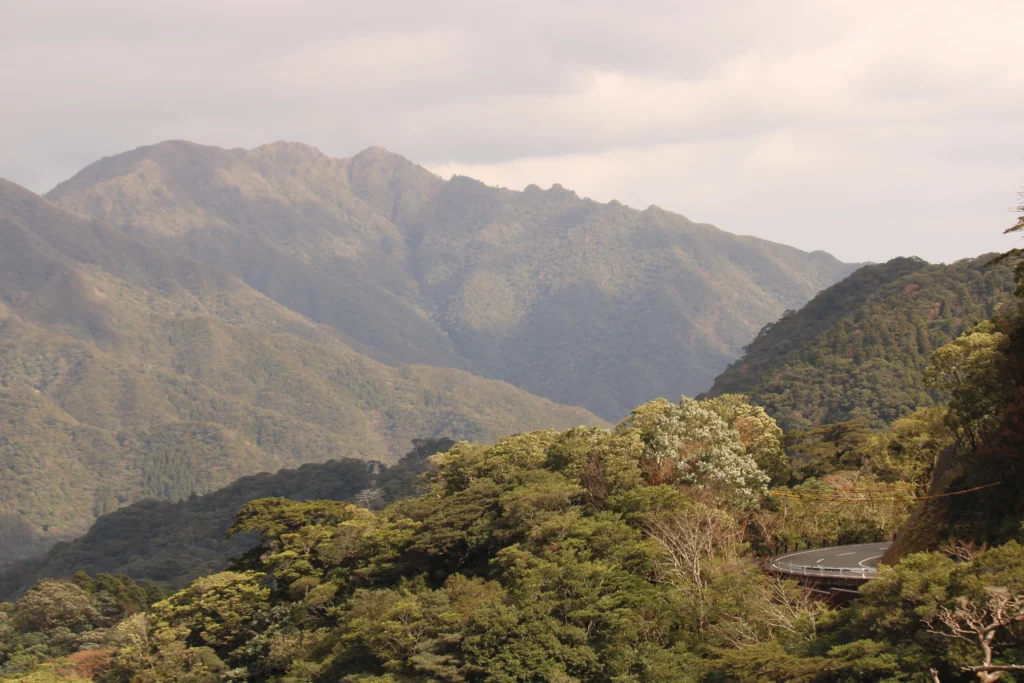
“I have crossed mountains and rivers to get here. I have never seen a place so pure and full of life.” This quote from Ashitaka, the protagonist of Princess Mononoke, reflects the essence of Yakushima Island, where Hayao Miyazaki drew inspiration to create this cinematic masterpiece. With its ancient forests and millennia-old trees, this Pacific island is a place where the tangible and the divine intertwine. Belonging to Kagoshima Prefecture, Yakushima’s unique atmosphere evokes the profound respect for nature found in Miyazaki’s films, serving as a reminder of how humans are connected to a much larger and older world than ourselves.
Yakushima is one of Japan’s most magical places. Although the country boasts many spectacular natural sites, this island has something truly special. Located south of Kyūshū, it enjoys a humid subtropical climate with mild temperatures year-round, with hot and humid summers, though there is a stark contrast between the mountains and the coast. Directly impacted by the humid winds from the ocean, Yakushima is one of the rainiest places in Japan. Locals jokingly say it rains 35 days a month, and in reality, the island receives between 5,000 and 10,000 liters of rainfall annually. The island is also known for its towering mountains, nearly 2,000 meters high, leading many to refer to its mountain ranges as the Alps of the Pacific.
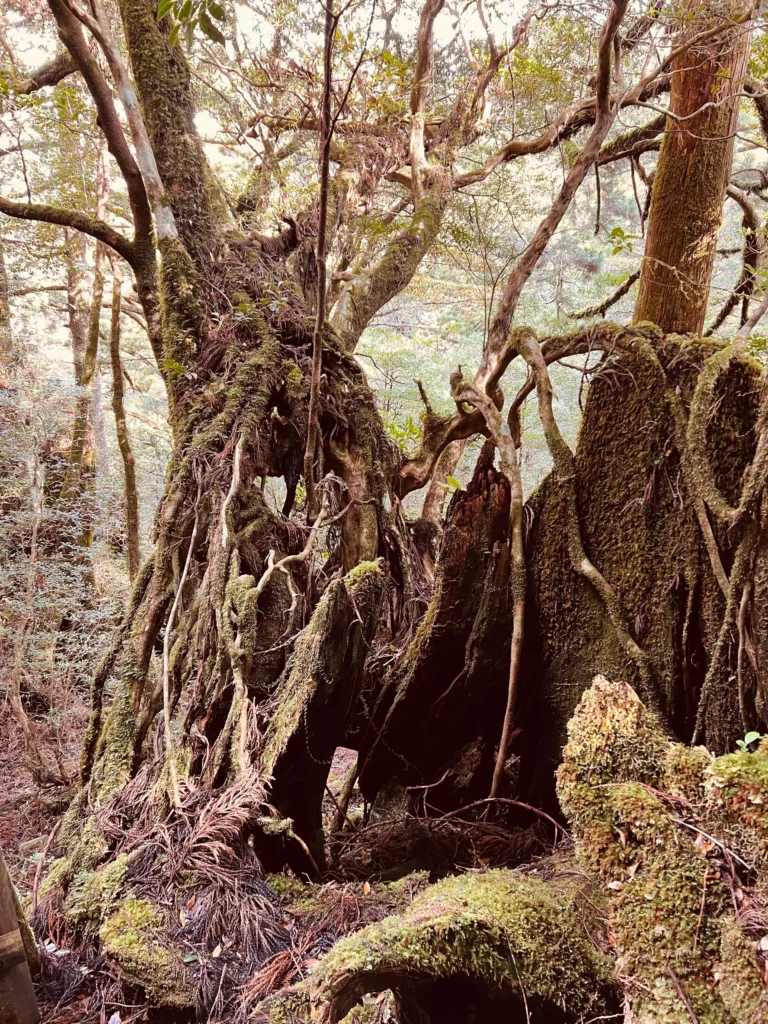
The heat, humidity, and mountainous climate combine to offer a truly unique biodiversity. From a botanical perspective, the Japanese cedar forests, sugi (杉), stand out. These legendary trees can live up to 7,000 years and are a must-see during your visit to Yakushima. Yakusugi Land (ヤクスギランド) is a wonderful park where you can take various trails to appreciate the majesty of these ancient trees and learn about the uses the island’s inhabitants have made of this strong and durable wood over the years. In terms of fauna, two species stand out: the sika deer (鹿) and the Japanese macaque (ニホンザル), which coexist peacefully in the National Park, a UNESCO World Heritage site since 1993.
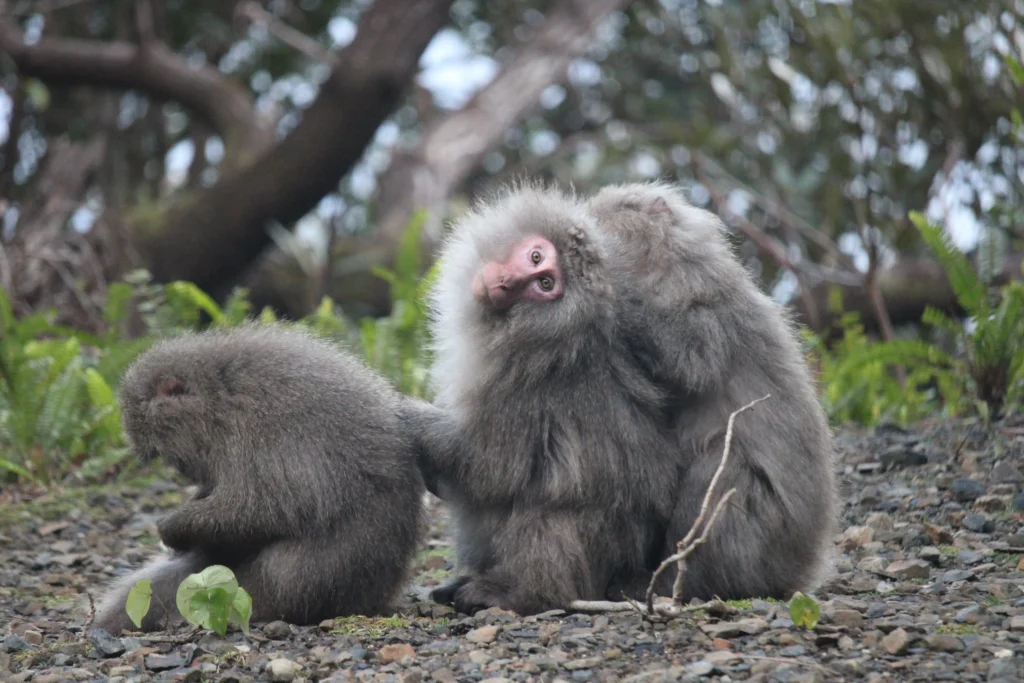
About Yakushima
With an area of about 500 km², there are several well-defined regions. The northern coast is the most connected and has the most services, while the more remote areas, such as the southern coast and the western area, offer fewer access points and require more planning to get around the island. We definitely recommend renting a car as soon as you arrive, whether by ferry or by plane. Although there are buses that cover much of the island, the schedules are not very convenient, and there are areas you won’t be able to access without your own vehicle. Yakushima is very easy to drive in, as there is a main road that loops around the island and will be your main route of communication, so don’t worry even if you’ve never driven a car in Japan. There is very little traffic here, people are extremely patient on the road, and the speed limit is 50 km per hour.
In the north is the main port of Miyanoura, the most accessible area of the island, with good connections and services such as accommodations and restaurants. It is the region with the most infrastructure and easy access to other tourist spots. It is also connected to the center, which includes the Miyanoura mountains and popular hiking routes, such as those leading to Jomon Sugi. The eastern area is known for its landscape of waterfalls and moss-covered forests, such as Shiratani Unsuikyo, while in the south, you can enjoy quieter beaches and coastal views. The west is the most isolated area, and access is only possible by car, as the roads are not suitable for buses. Without a doubt, this is the most spectacular area to explore slowly by car, as along the way you will encounter deer and monkeys, a magical place where you will feel like Ashitaka from Princess Mononoke, discovering the magic of the forest and the tranquility of animal life. In the northwest, there are several beaches, among which Inkahama beach stands out. It is easily accessible and a beautiful spot to spend the day enjoying spectacular views.
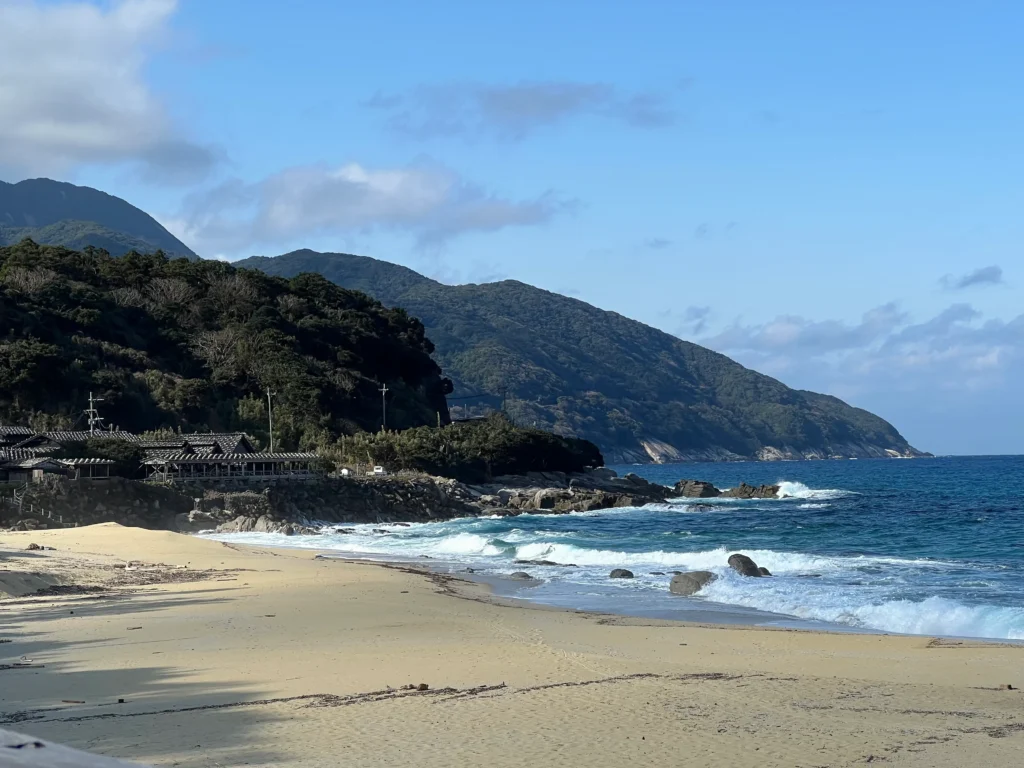
What to do in Yakushima
Although simply contemplating the majesty of the island is a highly recommended activity, Yakushima also offers other experiences that will undoubtedly complement your trip to this remote destination in Japan. In Yakushima, the most popular activity is hiking along the different trails, which are well-marked, but you can also embark on more advanced mountain routes, either with or without a guide. Either way, walking through the island’s paths will be a pleasure. If you enjoy water activities, you can go scuba diving in the southern area, around Kuroshio. In addition to the macaques and sika deer, Yakushima is an important spot for sea turtle sightings, as they usually nest in the northern part of the island, in Nagata and Ohama. However, it is recommended that you check the nesting seasons before planning this activity. As part of Asiahop’s commitment to sustainable tourism, we do not recommend engaging in this activity without consulting the nesting seasons and access to turtle areas in advance, to protect the life cycle of these species.
As in all of Japan, Yakushima has many onsens, and its waters are rich in minerals. We recommend visiting some of the outdoor onsens located in the southern part of the island, such as Yudomari Onsen (湯泊温泉) or Hirauchi Kaichu Onsen (平内海中温泉). In these two places, you can enjoy a hot and relaxing bath in the middle of the sea, as the onsens are formed in natural rock pools right on the coast, and during high tides, they are covered by ocean water. Therefore, if you want to experience them, you’ll need to go during the two hours before or after low tide. Enjoying these baths when the low tide occurs at dawn or sunrise is an unforgettable experience.
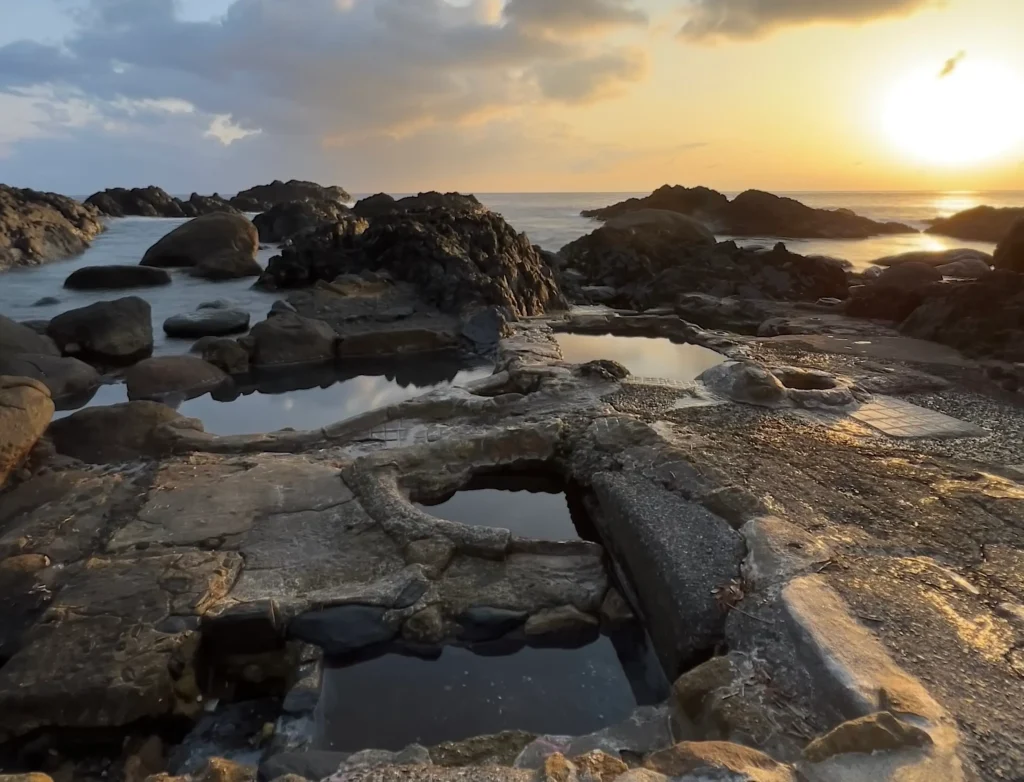
Would you like to travel to Yakushima and enjoy a natural paradise where sustainable tourism is still practiced? Contact us, and we will design the perfect experience for an unforgettable trip.